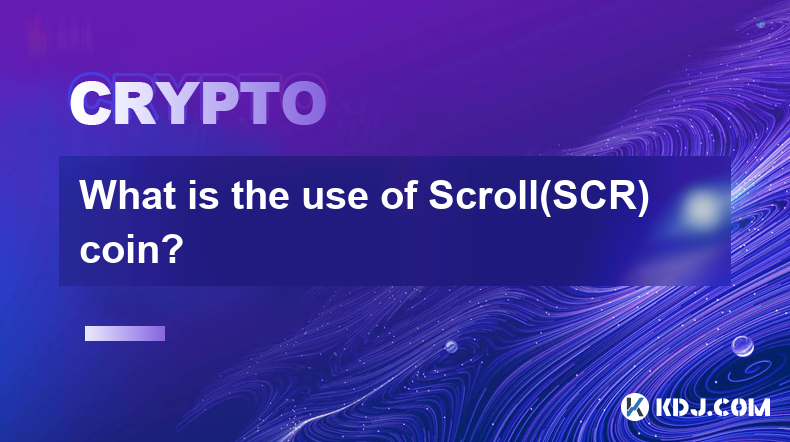-
 Bitcoin
Bitcoin $99,577.7827
2.77% -
 Ethereum
Ethereum $1,933.4035
4.93% -
 Tether USDt
Tether USDt $1.0002
0.03% -
 XRP
XRP $2.2030
2.81% -
 BNB
BNB $616.1256
1.57% -
 Solana
Solana $153.0057
3.62% -
 USDC
USDC $1.0001
0.01% -
 Dogecoin
Dogecoin $0.1830
5.50% -
 Cardano
Cardano $0.7151
4.50% -
 TRON
TRON $0.2505
1.89% -
 Sui
Sui $3.7051
8.86% -
 Chainlink
Chainlink $14.7665
5.95% -
 Avalanche
Avalanche $20.9867
5.45% -
 Stellar
Stellar $0.2722
3.79% -
 Bitcoin Cash
Bitcoin Cash $413.3602
10.19% -
 UNUS SED LEO
UNUS SED LEO $8.7924
1.21% -
 Shiba Inu
Shiba Inu $0.0...01343
4.39% -
 Hedera
Hedera $0.1859
4.67% -
 Toncoin
Toncoin $3.1187
3.38% -
 Hyperliquid
Hyperliquid $21.6882
1.30% -
 Litecoin
Litecoin $91.9648
-1.05% -
 Polkadot
Polkadot $4.2389
6.22% -
 Monero
Monero $291.7538
1.03% -
 Dai
Dai $1.0003
0.01% -
 Bitget Token
Bitget Token $4.3174
-0.22% -
 Ethena USDe
Ethena USDe $1.0004
0.01% -
 Pi
Pi $0.6225
7.32% -
 Pepe
Pepe $0.0...09208
12.98% -
 Bittensor
Bittensor $404.3195
9.62% -
 Uniswap
Uniswap $5.1820
5.18%
What is the use of Scroll(SCR) coin?
SCR token enhances the Scroll network through transaction fees, staking rewards, governance, zkSync collateralization, accessible NFTs, developer incentives, cross-chain interoperability, and potential token appreciation.
Dec 08, 2024 at 01:36 pm

What is the Use of Scroll (SCR) Coin?
Introduction
Scroll (SCR) is an Ethereum Layer 2 scaling solution that utilizes zk-SNARKs (zero-knowledge Succinct Non-Interactive Arguments of Knowledge) to improve transaction throughput and reduce gas fees. SCR, the native token of the Scroll network, plays a crucial role in the ecosystem's operations and governance.
Utility and Benefits of Scroll Coin
- Transaction Fees: SCR is used to pay for transaction fees on the Scroll network. By leveraging zk-SNARKs, Scroll offers significantly lower fees compared to the Ethereum mainnet, enabling users to conduct transactions at a fraction of the cost.
- Staking: SCR holders can stake their tokens to secure the Scroll network and earn rewards. Stakers contribute to the decentralized consensus mechanism, ensuring the integrity of the system. In return, they receive staking rewards in the form of additional SCR tokens.
- Governance: SCR empowers holders with voting rights to participate in the governance of the Scroll network. They can propose and vote on upgrades to the protocol, fee structures, and other important decisions that shape the future of Scroll.
- Collateral for zkSync: SCR is used as collateral to generate zkSync, a decentralized exchange (DEX) that operates on top of Scroll. zkSync utilizes zk-SNARKs to provide privacy-preserving and cost-effective trading of digital assets. By staking SCR, users can contribute to zkSync's security and earn rewards in exchange.
- Accessible NFTs: Scroll's low transaction fees make it ideal for minting, trading, and collecting NFTs (non-fungible tokens). SCR enables users to participate in the NFT ecosystem without incurring exorbitant gas costs.
- Development and Integration: SCR incentivizes developers to build applications and integrations on Scroll. Developers can earn rewards and support from the community for developing solutions that enhance the ecosystem's functionality.
- Bridge between Ethereum and other Networks: Scroll acts as a bridge between Ethereum and other blockchain networks, enabling interoperability and cross-chain transactions. SCR facilitates the conversion and transfer of assets between different networks, simplifying the process for users.
- Token Appreciation: As the Scroll ecosystem grows and adoption increases, the demand for SCR could increase, potentially leading to an appreciation in its value. SCR holders may benefit from the long-term growth potential of the Scroll project.
Disclaimer:info@kdj.com
The information provided is not trading advice. kdj.com does not assume any responsibility for any investments made based on the information provided in this article. Cryptocurrencies are highly volatile and it is highly recommended that you invest with caution after thorough research!
If you believe that the content used on this website infringes your copyright, please contact us immediately (info@kdj.com) and we will delete it promptly.
- Dogecoin (DOGE) Price Has the Potential to Experience a Large Increase After Forming a Rare Pattern
- 2025-05-08 18:15:13
- Flare Network's total value locked has spiked by more than 160% over the past two weeks
- 2025-05-08 18:15:13
- EOS Price Surges 20% as the Coin Swaps to Vaulta
- 2025-05-08 18:10:12
- Streamlining Sei's Architecture to Focus Solely on EVM
- 2025-05-08 18:10:12
- Meme Coin Marvel Shiba Inu (SHIB) Could Be Challenged by Fast-Rising DeFi Coin, Mutuum Finance (MUTM)
- 2025-05-08 18:05:12
- Arizona Governor Katie Hobbs signs House Bill 2749 into law, allowing the establishment of a Bitcoin and Digital Assets Reserve Fund
- 2025-05-08 18:05:12
Related knowledge

Is Ethereum smart contract call fee high? How to optimize costs?
May 08,2025 at 09:35am
Is Ethereum Smart Contract Call Fee High? How to Optimize Costs? The world of Ethereum smart contracts has revolutionized the way we think about decentralized applications and blockchain technology. However, one of the most frequently discussed topics within this realm is the cost associated with executing smart contract calls. In this article, we will ...

Is Ethereum Layer2 fee low? How to use it cheaper?
May 08,2025 at 03:56am
The question of whether Ethereum Layer 2 solutions offer lower fees and how to use them more economically is a topic of great interest within the cryptocurrency community. Ethereum's Layer 2 solutions have been developed to address the high transaction fees and scalability issues associated with the main Ethereum network. In this article, we will delve ...

How to calculate Ethereum network fee? How to reduce transaction costs?
May 08,2025 at 02:15am
Understanding and managing Ethereum network fees is crucial for anyone involved in transactions on the Ethereum blockchain. The network fee, also known as gas fee, is the amount of Ether (ETH) required to successfully conduct a transaction or execute a smart contract on the Ethereum network. Calculating these fees and finding ways to reduce them can sig...

What is Ethereum Gas Fee? How to optimize Gas Fee to save costs?
May 08,2025 at 03:43am
Ethereum gas fees are a crucial aspect of interacting with the Ethereum blockchain. Understanding and optimizing these fees can significantly impact the cost-effectiveness of transactions and smart contract interactions. In this article, we will delve into what Ethereum gas fees are, how they are calculated, and provide detailed strategies for optimizin...

How to perform MOVE cross-chain transfer? What to do if the gas fee is too high?
May 07,2025 at 08:03pm
Introduction to MOVE Cross-Chain TransferCross-chain transfers have become an essential part of the cryptocurrency ecosystem, allowing users to move assets between different blockchain networks. One of the popular protocols for achieving this is the MOVE cross-chain transfer. This article will guide you through the process of performing a MOVE cross-cha...

How is the DYDX liquidation price calculated? How is the forced liquidation mechanism?
May 08,2025 at 06:49am
The DYDX liquidation price and the forced liquidation mechanism are crucial aspects of trading on the dYdX platform, a decentralized exchange that allows users to trade perpetual contracts. Understanding these concepts is essential for managing risk and maximizing potential returns. In this article, we will delve into the details of how the DYDX liquida...

Is Ethereum smart contract call fee high? How to optimize costs?
May 08,2025 at 09:35am
Is Ethereum Smart Contract Call Fee High? How to Optimize Costs? The world of Ethereum smart contracts has revolutionized the way we think about decentralized applications and blockchain technology. However, one of the most frequently discussed topics within this realm is the cost associated with executing smart contract calls. In this article, we will ...

Is Ethereum Layer2 fee low? How to use it cheaper?
May 08,2025 at 03:56am
The question of whether Ethereum Layer 2 solutions offer lower fees and how to use them more economically is a topic of great interest within the cryptocurrency community. Ethereum's Layer 2 solutions have been developed to address the high transaction fees and scalability issues associated with the main Ethereum network. In this article, we will delve ...

How to calculate Ethereum network fee? How to reduce transaction costs?
May 08,2025 at 02:15am
Understanding and managing Ethereum network fees is crucial for anyone involved in transactions on the Ethereum blockchain. The network fee, also known as gas fee, is the amount of Ether (ETH) required to successfully conduct a transaction or execute a smart contract on the Ethereum network. Calculating these fees and finding ways to reduce them can sig...

What is Ethereum Gas Fee? How to optimize Gas Fee to save costs?
May 08,2025 at 03:43am
Ethereum gas fees are a crucial aspect of interacting with the Ethereum blockchain. Understanding and optimizing these fees can significantly impact the cost-effectiveness of transactions and smart contract interactions. In this article, we will delve into what Ethereum gas fees are, how they are calculated, and provide detailed strategies for optimizin...

How to perform MOVE cross-chain transfer? What to do if the gas fee is too high?
May 07,2025 at 08:03pm
Introduction to MOVE Cross-Chain TransferCross-chain transfers have become an essential part of the cryptocurrency ecosystem, allowing users to move assets between different blockchain networks. One of the popular protocols for achieving this is the MOVE cross-chain transfer. This article will guide you through the process of performing a MOVE cross-cha...

How is the DYDX liquidation price calculated? How is the forced liquidation mechanism?
May 08,2025 at 06:49am
The DYDX liquidation price and the forced liquidation mechanism are crucial aspects of trading on the dYdX platform, a decentralized exchange that allows users to trade perpetual contracts. Understanding these concepts is essential for managing risk and maximizing potential returns. In this article, we will delve into the details of how the DYDX liquida...
See all articles
























![[2025.05.08] The two routes of Bitcoin continue to be observed, and gold is still bullish. [2025.05.08] The two routes of Bitcoin continue to be observed, and gold is still bullish.](/uploads/2025/05/08/cryptocurrencies-news/videos/routes-bitcoin-continue-observed-gold-bullish/image_500_375.webp)




























































